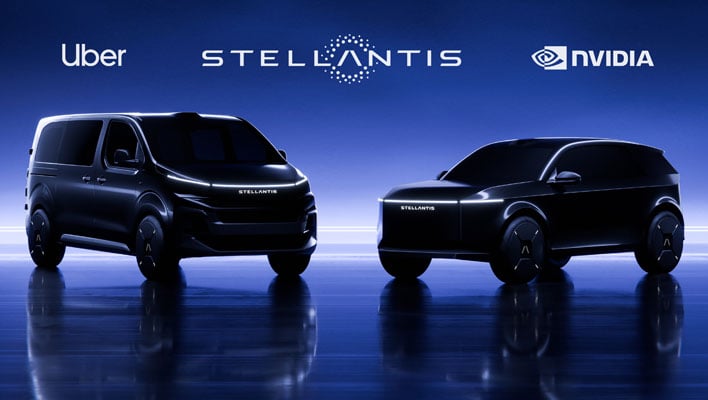Uber has already changed the taxi game with its, ahem, uber-popular ride sharing service, and now NVIDIA is hopping into the driver's seat on what figures to be the next evolution—a fleet of autonomous robotaxis built on NVIDIA's new DRIVE AGX Hyperion 10 platform. To make this happen, NVIDIA and Uber are teaming up to scale what's being pitched as the world's largest level 4-ready mobility network.
Yes, this is the same NVIDIA that has
made a killing designing and selling GPUs, first for gamers and, more recently, with a hyper-focus on the data center with its AI chips. NVIDIA's success has largely hinged on the company's ability to adapt to market trends. That once included catering to the crypto community. More than just adapting, though, NVIDIA is driving the AI era in a big way. Now it wants to literally drive a fleet of robotaxis.
"Robotaxis mark the beginning of a global transformation in mobility—making transportation safer, cleaner and more efficient," said Jensen Huang, founder and CEO of NVIDIA. “Together with Uber, we’re creating a framework for the entire industry to deploy autonomous fleets at scale, powered by NVIDIA AI infrastructure. What was once science fiction is fast becoming an everyday reality."
Contained in Huang's statement lies the key to NVIDIA's play in the transportation space—an entire framework, which negates the need for automakers and players in the autonomous space to piecemeal technologies that may or may not work well together.
In contrast, the DRIVE AGX Hyperion 10 framework enables a cohesive solution designed for seamless execution in the autonomous space. At its core, the framework is a reference production computer and sensor set architecture combining sensors like radar and lidar (and others) with dual DRIVE AGX Thor computers powered by NVIDIA's
Blackwell architecture. The full-stack framework can effectively turn just about any vehicle into a level 4-ready platform. Second only to level 5, a level 4 autonomous vehicle can navigate roads and react to dynamic conditions without human input.
By partnering with Uber, NVIDIA is able to tap into a massive market opportunity for what Huang describes as a computing platform on wheels. The idea is not to replace human drivers entirely, but to supplement them with robotaxies in a unified network of both human and robot pilots.
"NVIDIA is the backbone of the AI era, and is now fully harnessing that innovation to unleash L4 autonomy at enormous scale, while making it easier for NVIDIA-empowered AVs to be deployed on Uber," said Dara Khosrowshahi, CEO of Uber. "Autonomous mobility will transform our cities for the better, and we’re thrilled to partner with NVIDIA to help make that vision a reality."
Uber Is Just The Beginning
The big news here is NVIDIA's partnership with Uber, with the ride-sharing service looking to deploy an autonomous fleet of 100,000 robotaxis starting in 2027. But as we've seen time and again from NVIDIA, it's not putting all of its eggs into a single basket.
In a sense, Uber could ultimately serve as a proving ground for NVIDIA's tech as it takes on Waymo and Tesla in the autonomous driving sector. It's also an opportunity to build relationships with automakers, and that is already happening. NVIDIA says it's already working with leading global automakers, robotaxi companies, and tier 1 suppliers to launch level 4 fleets with NVIDIA AI behind the wheel.
One of those is Stellantis, which is developing AV-ready platforms optimized for level 4 capabilities that meet robotaxi requirements.
"These platforms will integrate NVIDIA’s full-stack AI technology, further expanding connectivity with Uber’s global mobility ecosystem. Stellantis is also collaborating with Foxconn on hardware and systems integration,"
NVIDIA says.
Companies like Lucid and Mercedes-Benz are also tapping into NVIDIA's full-stack framework in efforts to accelerate their own autonomous plans. And in the commercial trucking space, outfits like Aurora, Volvo Autonomous Solutions, and Waabi are actively developing level 4 autonomous trucks based on NVIDIA's DRIVE platform.
This is just the beginning, too. NVIDIA has been developing autonomous solutions for quite some time now, and we're seeing the company start to hit its stride with continued tech advancements (especially in AI) and key partnerships. The market for NVIDIA's framework exists, and the next step is proving it at scale.



